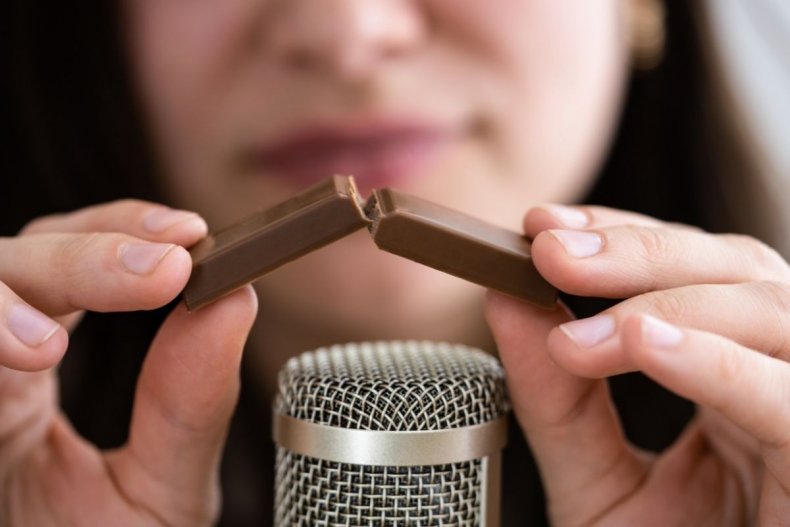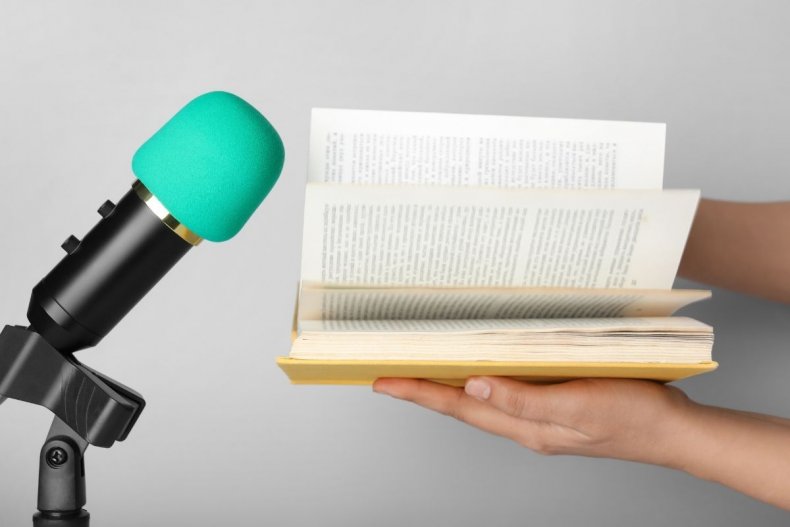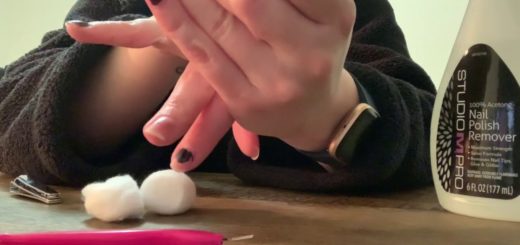What Is ASMR? What It Does and Why It Works
[ad_1]
Autonomous sensory meridian response (ASMR) has become a new craze in the social media age, though the practice has been around for much longer. Many YouTube channels and apps are now dedicated to ASMR, with the aim of giving the listener a tingling sensation.
The process of ASMR requires someone else to provide these sensations for a person, mainly through sounds produced in a specific way. It can have benefits, including stress reduction.
However, it also is not something that works for everyone, which can be due to a number of factors.
We consulted experts in the field on what ASMR actually is, how it works, and why some people don’t feel the benefits.
What Does ASMR Stand for and What Is It?
ASMR stands for autonomous sensory meridian response. It’s also known as “brain tingles,” and it can come from particular sound frequencies or visual things.

Getty Images
While it’s seen as a fairly new phenomenon, Dr. David Rakofsky, psychologist and president of the Wellington Counseling Group, said it has been around for about 15 years, despite major research not taking place until more recently.
He told Newsweek: “My understanding of the limited literature regarding ASMR is that it emerged as a known experience going back about 15 years, and a community of those familiar with the phenomenon grew from there, once it was labeled.
“Science has not truly weighed in to date with any meaningful or full-throated consensus as to exactly what defines it (what it is and is not), and more importantly, why—biologically, evolutionarily, sensorily and psychologically—people tend to report a shared experience of pleasurable innervation from being exposed to its ‘triggers’ or typical sources of the sensation.”
According to one of the first major research projects on the subject from the University of Sheffield in the U.K., which took place in 2018, the brain tingles associated with ASMR are often characterized as a warm, pleasant sensation that starts in the head and moves down the body.
They also note these are sometimes known as brain orgasms, though the data suggests the feelings experienced through ASMR are not sexual in nature.
Why Does ASMR Work, and Who Does It Work for?

Getty Images
When it comes to ASMR, not everyone gets the tingles from these frequencies, and these sensations change from person to person.
While some may not feel it at all, others may feel the sensation from completely different sounds to others, whether that is rustling noises, whispering or the sound of water and waves.
Rakofsky said this can sometimes be linked to personality, and a person’s environment as to whether they experience these things.
He said: “There are personality factors that have been shown to differentiate those who seek out ASMR, if not, those for whom ASMR has a noticeable and desired effect.
“What underlies those personality factors will always be a topic of debate, but for all human variation in personality, it comes down to a combination of biological and constitutional “givens” (call them “traits”) from birth and how those traits are impacted by the world one is raised in; how that environment feeds back on those traits, back and forth, bringing forth over time, stable reliable traits we think of as personality.”
Dr. Craig Richard, founder of ASMRUniversity.com, agreed with these ideas, showing how, at present, it isn’t clear what differentiates people who experience ASMR from those who don’t.
However, Richard suggested it could be the brain chemical oxytocin, also known as the love hormone, that is stimulated during ASMR. It induces a feeling of relaxation and comfort.
He told Newsweek: “Not everyone seems to experience ASMR. This could be due to a complex effect of environmental factors such as cultural influences, psychological state at that time, or differing expectations of ASMR content.
“It could also have a simple biological reason; people who enjoy ASMR may have differences in their oxytocin-related genes, resulting in a stronger response to ASMR triggers.”
In the University of Sheffield study, they didn’t outline what differentiates experiencers from non-experiencers, noting only that there was a clear difference in these groups.
Something for Everyone
Having said that, ASMR artist Laura Westcott, who creates ASMR for app Aura, says she believes there is something out there for everyone within the ASMR spectrum.
She told Newsweek: “I think if a person can feel a shudder-like sensation, then they can experience ASMR brain tingles.
“If they can’t, maybe it’s because certain people are less sensitive to sounds than others, but if you give it some time, I think anyone can enjoy the benefits of ASMR.”
As a classically trained singer, Westcott uses her voice to create more “personal” ASMR content, rather than using items like bags of chips to make the sounds.
She added: “I feel it the most when I hear close whispers to the microphone, as it feels like someone is literally whispering in my ear.
“When I use ASMR my intention is to give the listener a big hug with my voice.”
The Triggers for ASMR
There are many sounds that can create ASMR in a person, but one thing Rakofsky specified is that it must come from another person, creating a sense of intimacy.
He said: “Bucking the increasing isolation and digital separateness of our times (even pre-COVID) is the very organic occurrence in ASMR of experiencing our own bodies in some novel way as we respond to something.
“Much like with tickling, you cannot ASMR yourself very effectively; it requires another person.”
Victor Potrel, VP of platform partnerships at TheSoul Publishing, said he believes ASMR content must be audio and visual, as this helps to heighten the sensation further.
A recent video on his ASMR and stop-motion YouTube channel, Frankenfood, called “Sushi From Insects And Rotten Fish” attracted 200 million hits, and the channel as a whole saw a surge in views during the pandemic, suggesting a “feel-good distraction” or wanting comfort also helped to draw people in.
He said: “What makes a good ASMR video is a mix of both visual and auditory stimuli.
“Some of the most popular ASMR triggers for audio include whispering, eating, crinkling/swishing, blowing, scratching and page-turning.
“On the video side, cutting, mixing, squashing, popping, together with high contrast colors also creates a strong response.”
For Westcott, other than a personal touch being important, she enjoys the sounds of cats purring, perhaps again linking to the intimacy created by ASMR.
In a recent study by streaming service Deezer, which recently launched its own ASMR channel with a group of celebrity sessions, 34 percent of people surveyed (of 20,000 worldwide) found whispering and breathing sounds to be their top ASMR triggers.

Getty Images
[ad_2]
Source by [author_name]














